Tavistock Conservative Club ~ Tavistock, Devon.
Client : Tavistock Conservative Club.

Tavistock is an ancient stannary and market town and a civil parish in the county of Devon. A stannary was an administrative division established under stannary law in the counties of Devon and CornwaIl to manage the collection of tin coinage, a duty paid on all smelted tin that was mined in the county. It is situated on the River Tavy, from where the name Tavistock originates. The town can trace its recorded history back to at least 961 A.D. when Tavistock Abbey was founded, and whose ruins lie in the centre of the town. Its most famous son is Sir Francis Drake. In 2006 Tavistock Town Centre was named as the Eastern Gateway to the Cornish Mining World Heritage Site by UNESCO. There are roughly three hundred and sixty five listed buildings in Tavistock, and nearly all of them are within the conservation area. Whilst most of these are Grade II listed, four of them are Grade I listed. One of those Grade II listed buildings is the Tavistock Conservative Club which can be found in the centre of the town.
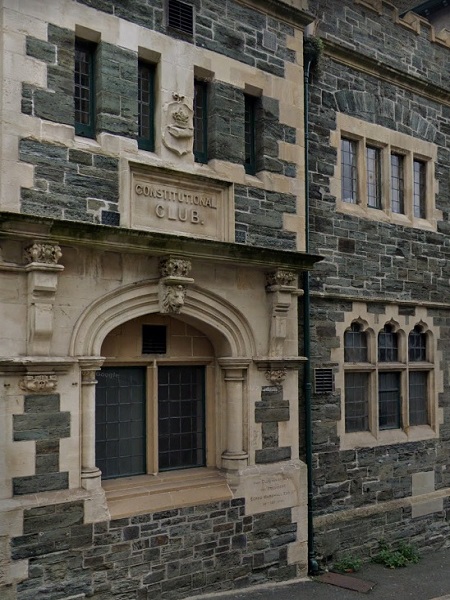
It was originally built in 1895 and first opened its doors as the ‘Constitutional Club’. It is built out of coursed ashlar using local Hurdwick stone with Bath stone detailing. Whilst the Conservative Club own the building, the ground floor has been rented out for various purposes over the years. A certain well known high street bank had rented it for a while and then decided to move out. At some point they were granted planning permission to install a cash point machine. In doing so they had literally created a hole in the wall on a Grade II listed building. Part of their tenancy agreement was to leave the building as they had found it. So, when they vacated, out came the cash point machine and then they had to put back the hole in the wall. They had to put it back just as they had found it. Now, bearing in mind this is a protected Grade II listed building and within a World Heritage Site, this is how they left it.
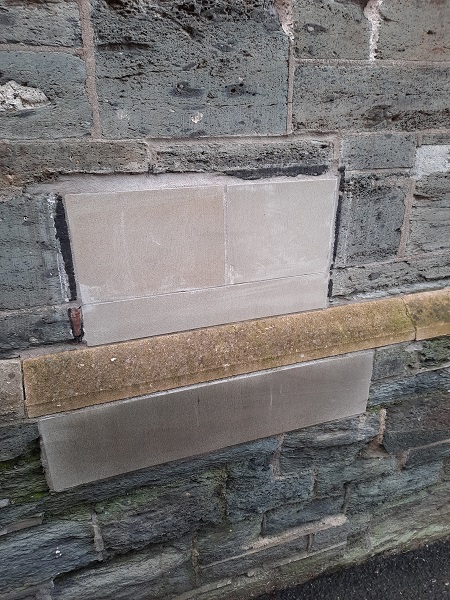
You don’t have to be a stonemason to see just what a wonderful job they actually did! The worst thing about it all was they didn’t even use a stone that matched. It was at this point we were contacted by the Conservative Club to put it right, with all the costs of the work to be met by the bank at fault. The hardest problem in restoring or repairing buildings in Tavistock is actually sourcing the Hurdwick stone if it is required. The original quarry at Hurdwick, on the outskirts of Tavistock, had been quarrying stone since the Medieval times, supplying much of the stone used for the buildings and landmarks constructed in the town of Tavistock itself, but the quarry gave up the ghost in 1920. The stone originates from what is known as the ‘Milton Abbot Formation‘. Luckily for us we know the current landowner where the old quarry is, so after taking some measurements back at the Conservative Club, a trip was organised to pick up some stone.
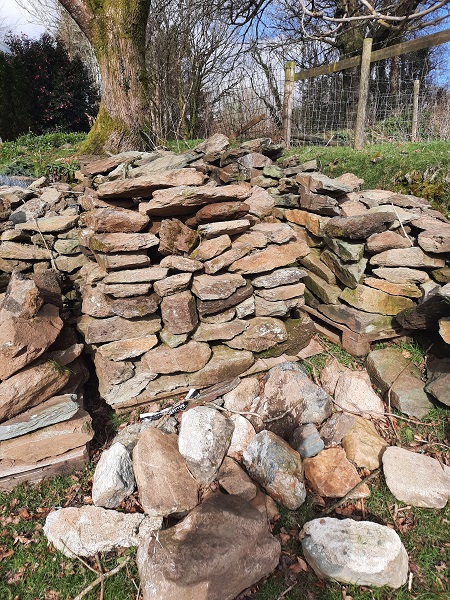
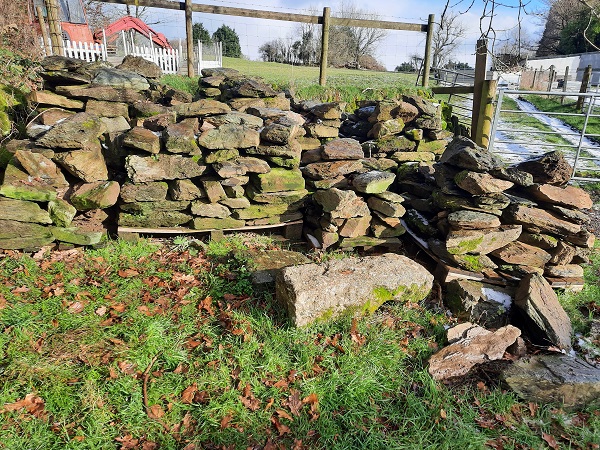
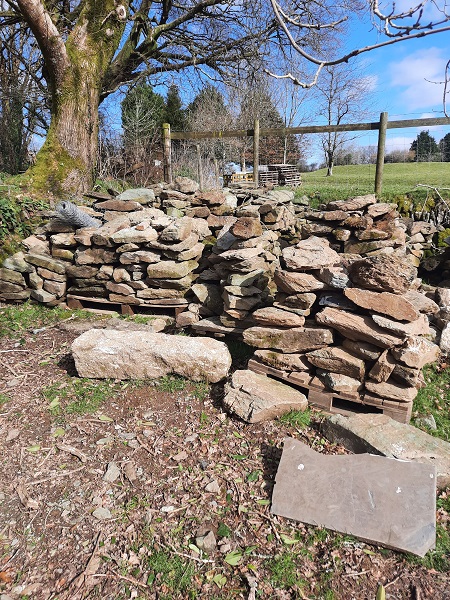
Using the measurements we had taken earlier, suitable stone was selected and loaded up onto the pick-up.

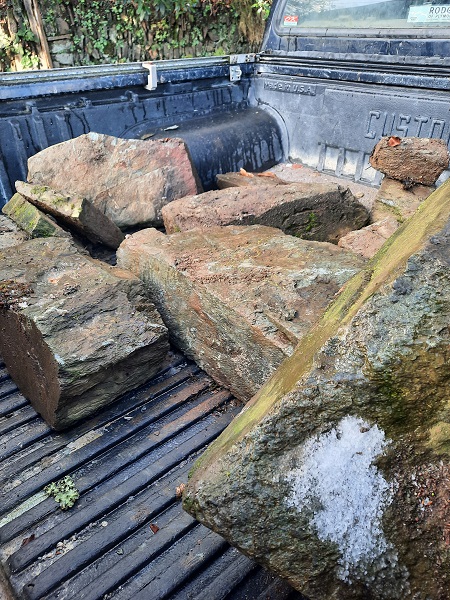
The stone was taken back to the yard and cut down to the modular sizes we had measured on site using our water fed masonry bench saw with a diamond cutting blade.
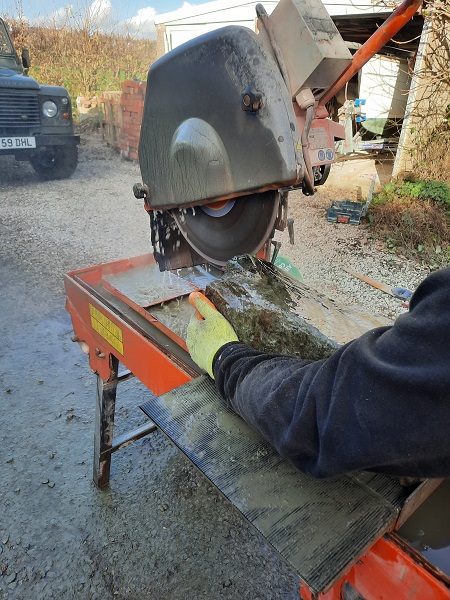
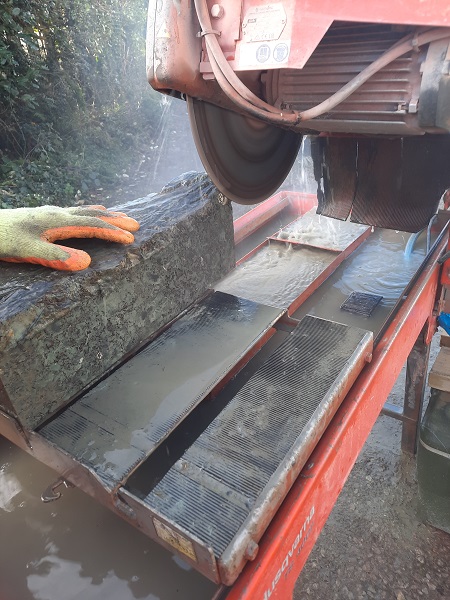
Once the stone had been cut down to size it was laid out on the floor to make sure it matched the drawings and measurements that we had taken and that the bonding of the stones worked out.
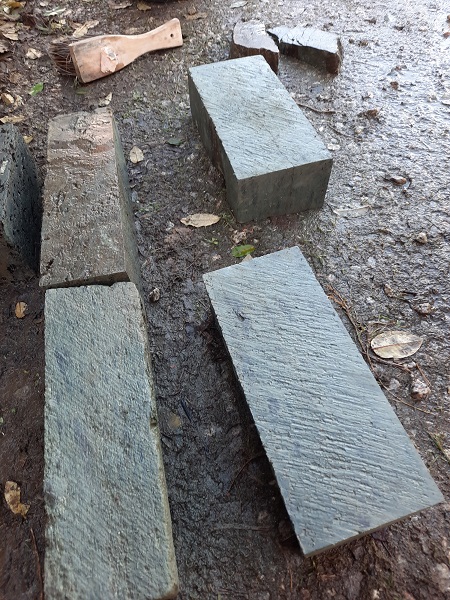
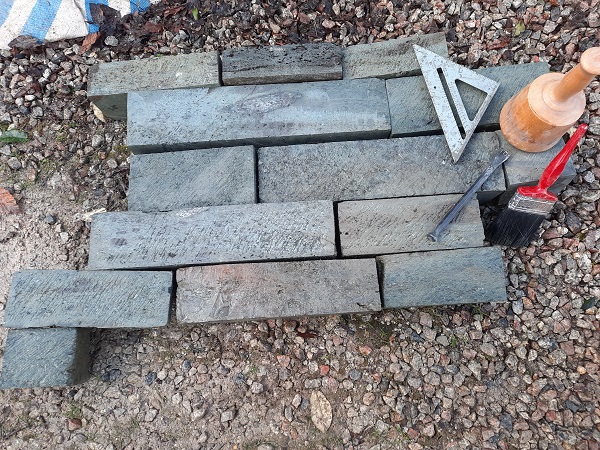
Each stone was hand dressed giving the final finish to match the existing stone on site. This was done using fire sharp chisels.
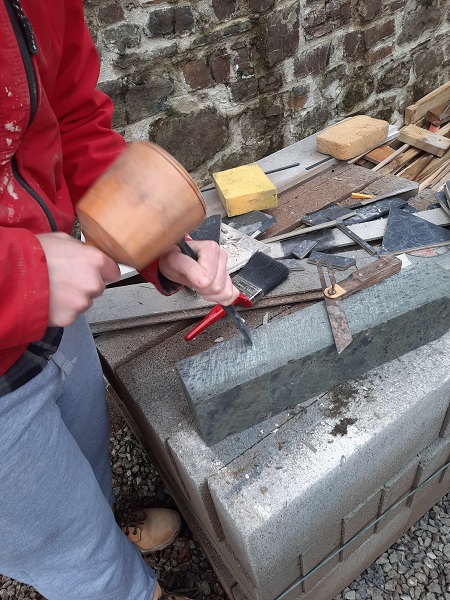
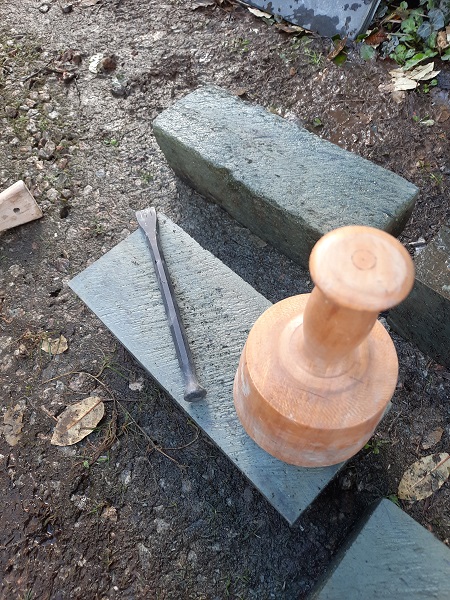
This type of finish is called ‘Slew Axing‘ or ‘Axed‘ where the chisel marks are left on the stone at varying angles. This method of finishing stone has been around for centuries and goes back to the times when a lot of stone was shaped and dressed with the use of an axe.

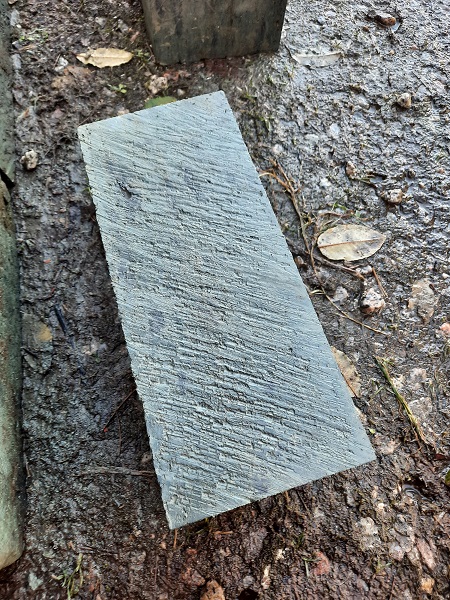
Once we were happy with all the stone cutting it was time to head on over to the site and get that hole in the wall opened up again. We started by stitch drilling around the area that had to come out.

We then carefully took out the mis-matched stone that had previously been built above the plinth course.

And once that had been removed, we took out the stone below it.
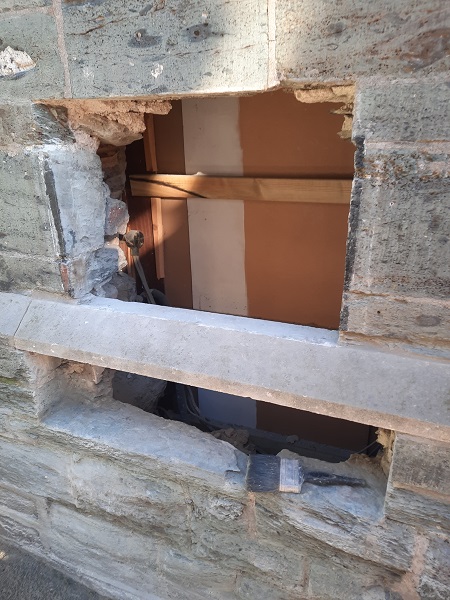
The plinth was actually reconstituted Bath stone and it was agreed that this would stay, it had actually weathered in quite well and was a good match to the rest of the original plinth around the building. Now that all the mis-matched stone had been removed it was time to start laying the newly dressed Hurdwick stone that we had cut. We started under the plinth first.
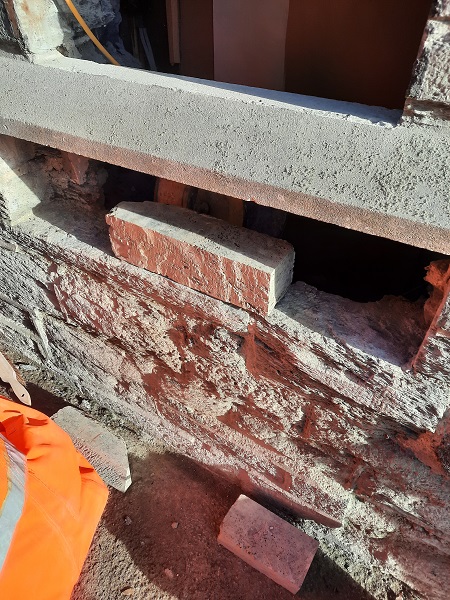

Then we built in the section above and before long that hole in the wall was filled back in again, only this time it was done the proper way, the way it should be done. These historic buildings are important to us and it is even more important that they are looked after, not just for us though, but for the future generations to follow. After all, these buildings can’t look after themselves can they?
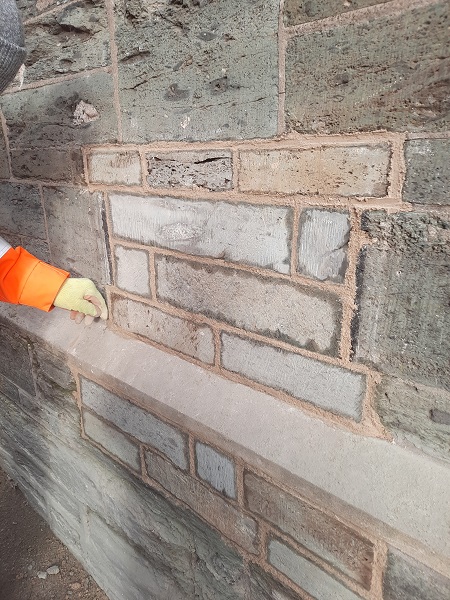
A traditional historic lime mortar was used to match the existing as close as possible.
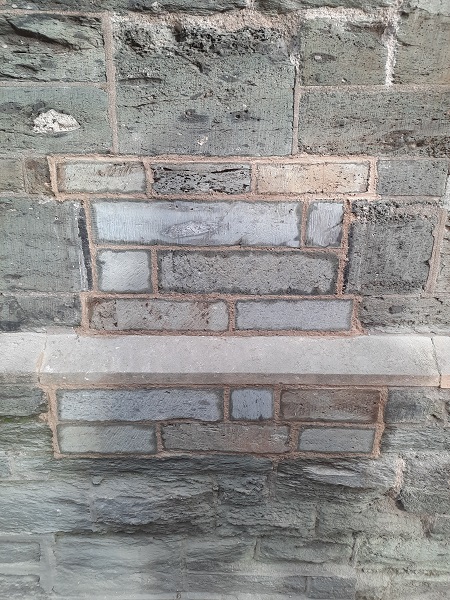
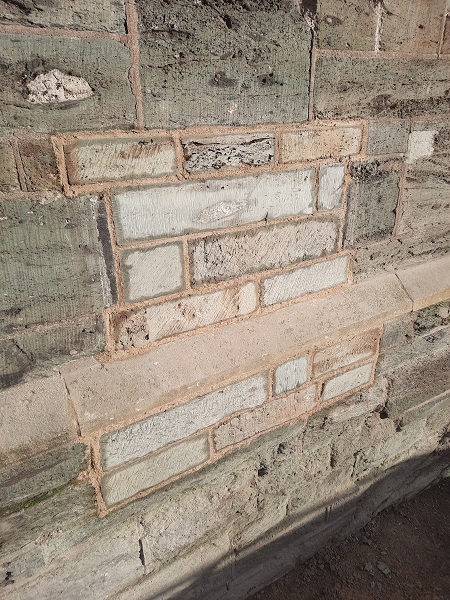
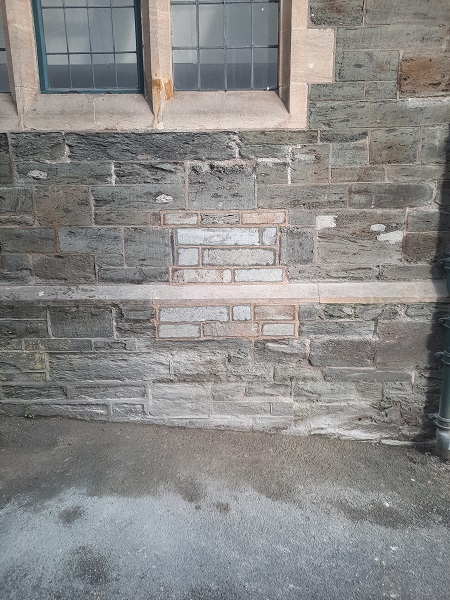
In geological terms, the Milton Abbot Formation largely comprises of the accumulated result of basaltic lava and volcaniclastic material. This formation is a geological unit in the Dartmoor National Park, Devon. These rocks erupted between 347 and 329 million years ago, during the Carboniferous period. The formation is particularly notable for its role in the geology of Dartmoor, where it contributes to the landscape, including formations like Brent Tor. Millions of years later this stone was quarried from the small outcrops located to the North and North West of Tavistock, most notably around Hurdwick Farm, from which the name ‘Hurdwick Stone’ gets its name. It is sometimes known locally as ‘Greenstone’ because the stone itself has a distinctive pale green colour and often a rough texture due to its vesicular nature. Unfortunately, the stone does not always weather too well and tends to fail over periods of time. It has nonetheless been used in Plymouth, and around Milton Abbot, North Brent Tor and as far West as Dunterton, however its most extensive use is around Tavistock, particularly within the World Heritage Site. During the copper boom of the 18th and 19th centuries, Hurdwick stone was used to great extent for the early 19th century buildings in the planned townscape, created by the very wealthy Duke of Bedford for his Estate. At that time, copper from this region, owned by the Duke, supplied more than half of the world’s output, so he really could afford to to splash out and make his mark.


